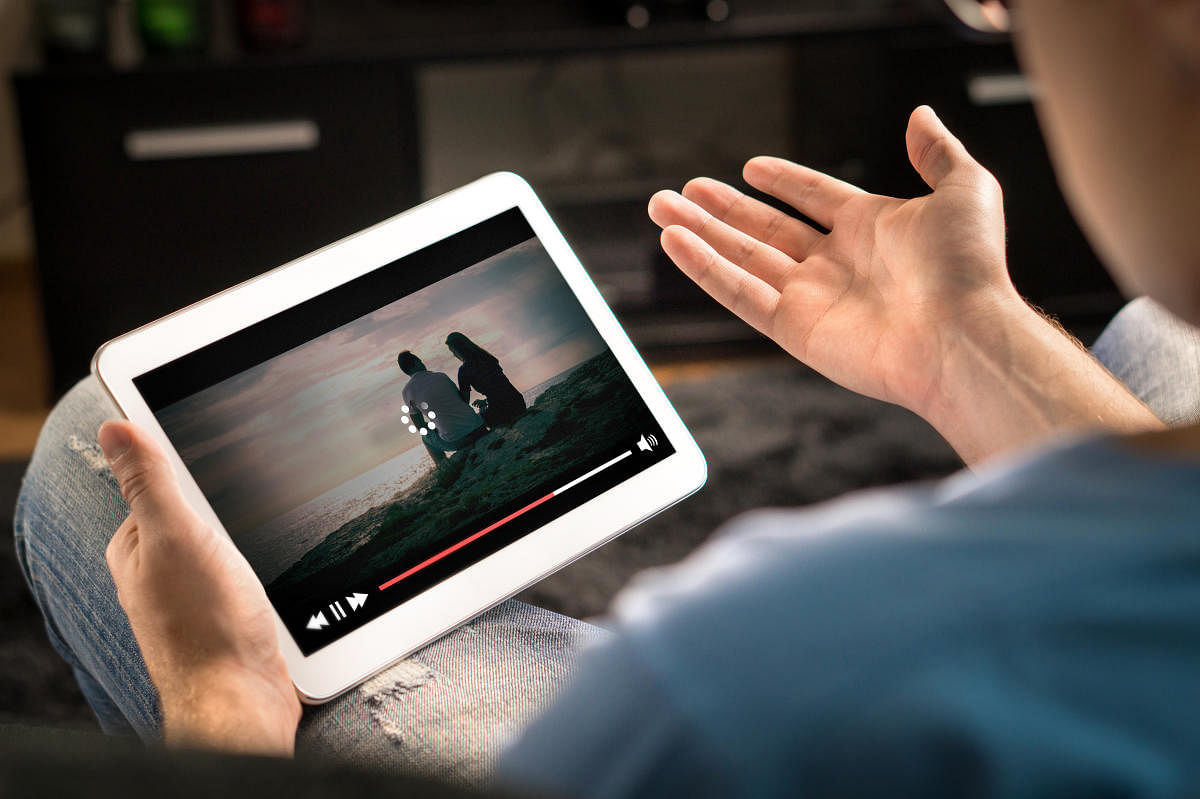
Over the past month, health problems arising from gadget addiction have gone up in number, doctors say.
People are spending more time with their gadgets and gizmos, doing everything from taking work calls to checking on the news to keeping in touch with family and friends. Younger tech users are playing games online and bingeing on their playstations.
‘Anxiety a reality’
Dr Manoj Kumar Sharma, professor of clinical psychology, SHUT (Service for Healthy Use of Technology) Clinic, Nimhans, has noticed a 20 to 30 per cent increase in gaming among late adolescents, and increased use of OTT platforms like Netflix, social media and YouTube among adults. Online meetings are causing more distress than face-to-face ones, he says.
“Complaints are on the rise. Excessive use of technology can lead to compulsiveness, which can be observed as a person checking his or her phone often and being online continuously,” he says.
Some even suffer from the ‘zero inbox syndrome’ (where one keeps checking phones and gadgets for messages or emails to make sure one responds to each and every message), and have a fear of missing out.
Sleep and food patterns have gone haywire for many. “When they realise that they are not following a structured pattern, it leads to guilt, which can lead to anxiety,” he says.
There are others who are experiencing Information Fatigue Syndrome, because of overloading of information. “Families have to work together and plan activities together. ‘Family time’ should not include gadgets or talk about them,” he says.
Parents can counsel children by setting an example themselves, Sharma says.
Eye fatigue
“Use of TV, laptops and gadgets has gone up approximately by 40 per cent. Among children, it is higher, at 50 per cent or more, as their playtime outside is zero,” says Dr Anand Balasubramaniam, senior consultant-cornea, Sankara Eye Hospital.
Strain and dry eyes are common when exposed to excessive screen time, he says. Irritability is a common issue. For people prone to migraine, flickering lights and prolonged digital exposure are triggers. Low lighting and bad posture can also add to eye problems in the long run, he says.
Viewing of screens not at straight eye level can elevate eye strain. Mood swings can also occur. “Refractive error (eye power) of children who are already wearing glasses could increase too,” he says.
Neck, body aches
Sitting at the desk for long hours is contributing to incorrect posture and aches and pains.
Dr Ravichandra Kelkar, consultant, orthopaedics, Columbia Asia Hospital Hebbal, says that most people are attending a huge number of webinars, work calls and more.
Following a gym regime is not possible now, but exercising is a must.
“Do it for at least 30 minutes. Some free-hand exercises like squats, stretching, bending and lifting is all that is needed. Yoga, breathing and posture exercises are good,” he says.
Ergonomic seating is a must. “Use a chair with good back support. If not, use a pillow behind the back. Keep arms by the side while working,” he says.
Prolonged digital time can lead to stress and anxiety, and affect the body from head to toe. “Orthopedically, pains can result from long hours at the desk,” he explains.
Wrist pain, often diagnosed as repetitive strain injury, is also being observed. “Since the lockdown started, 50 per cent of my patients between 30 and 50 years are calling about such aches,” he says.
Detox is the need of the hour
For your eyes
Follow the 20x20x20 rule. It is important to break the monotony and look at something far away after a certain amount of digital time. “For every 20 minutes of digital time, look at something 20 feet away for 20 seconds. You could look at a painting or outside a window or anything far away. This will help relax the eye as the effort of the eye muscles is most when looking at a closer or smaller object, doctors say.
It is better to watch movies on a laptop or TV than on a phone.
Blink often when using gadgets.
For emotional wellness
Read, chat or play non-digital games with family.
Avoid gadgets as much as possible.
Get at least 6 to 7 hours of sleep every day.
Put away your mobile 30 to 40 minutes before hitting the bed.
Aches and pains?
Do free-hand exercises.
Yoga, breathing and posture exercises help.
Take a one-minute break (at least), after every hour of work.
Stretch, walk around in the room, lift ankles.